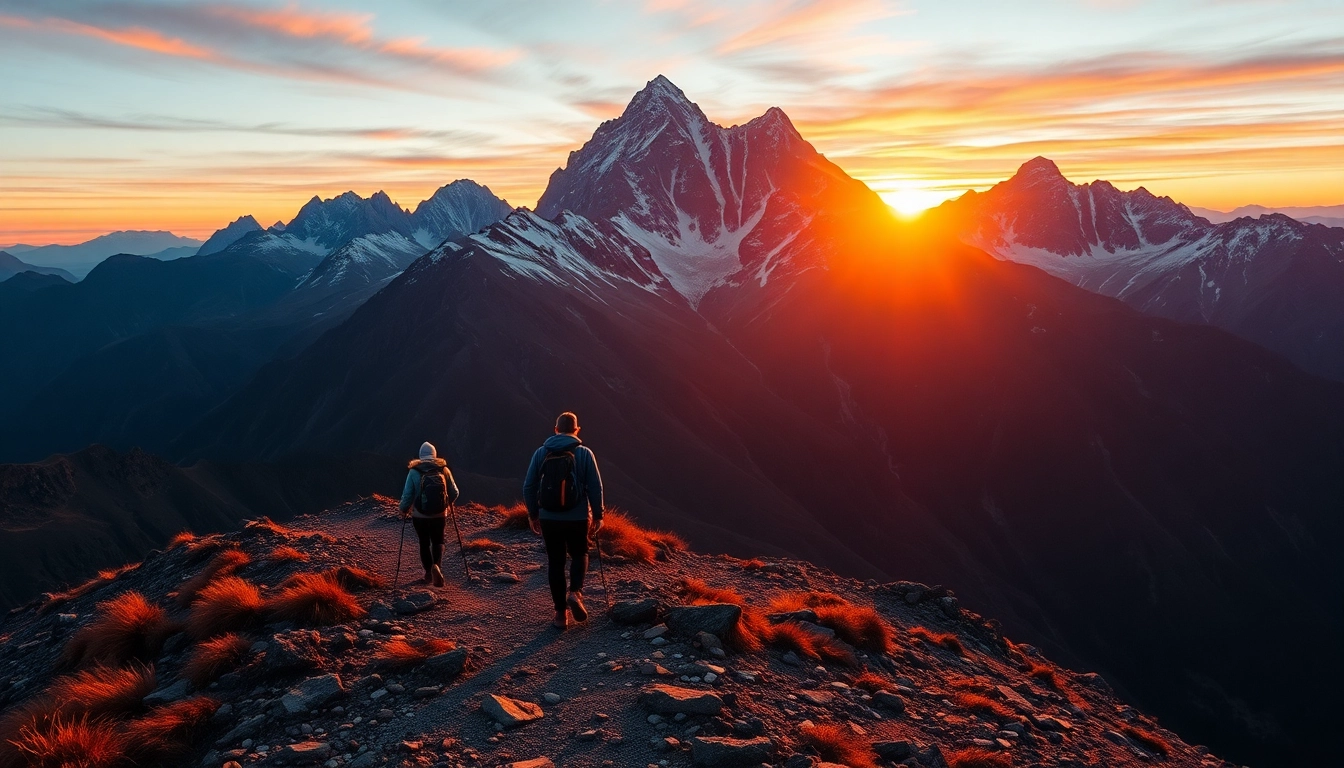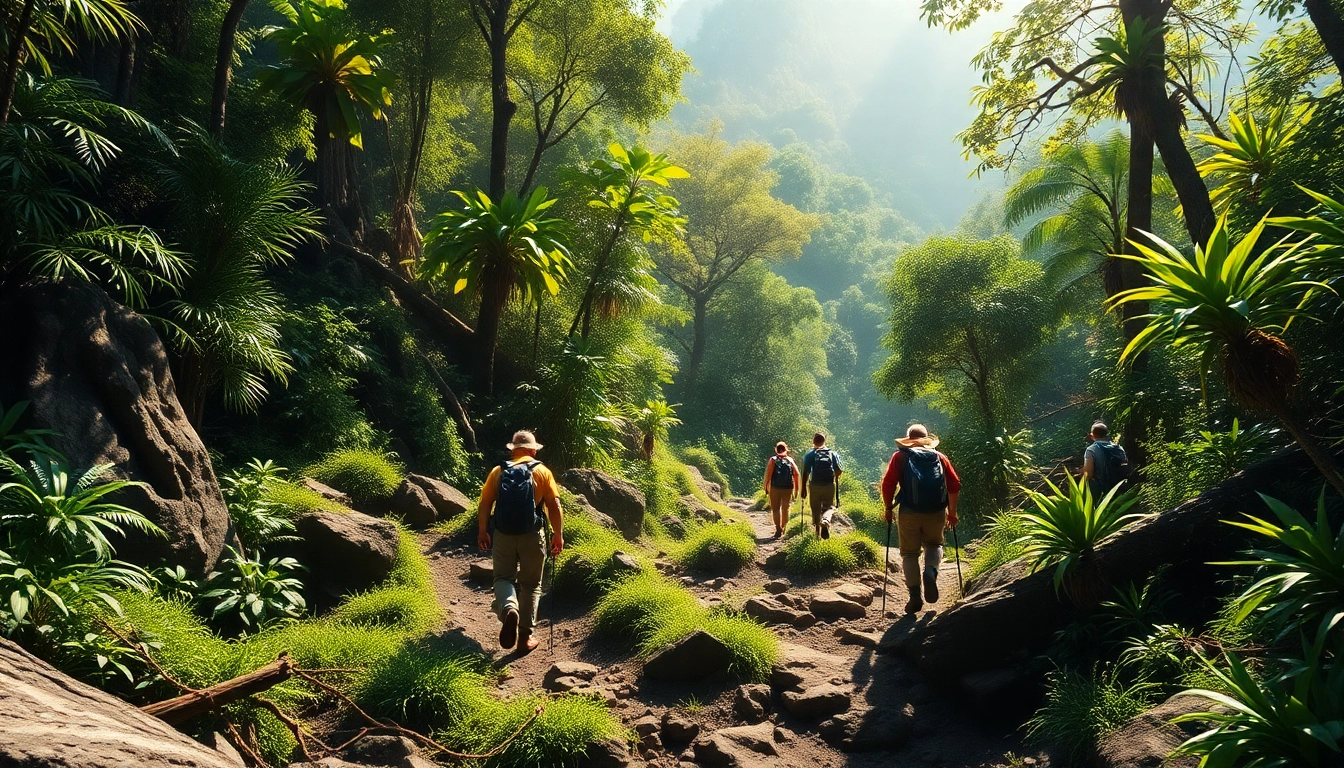Understanding What Makes a Guided Trek Unique
Definition and Key Features of Guided Treks
A guided trek is a structured journey undertaken on foot through natural landscapes, where participants are led and organized by an experienced guide. Unlike independent hiking, guided treks provide a comprehensive framework that includes logistical support, navigation assistance, cultural immersion, and safety provisions. The key features of guided treks encompass expert leadership, pre-arranged routes, support staff, accommodations, meals, and often, educational components about the local environment and culture. These elements make guided treks accessible to a broad range of participants, including beginners and seasoned explorers seeking a safe, educational, and immersive outdoor experience.
A defining trait of guided treks is the presence of a knowledgeable guide who not only ensures safety but also enhances the experience with local insights, storytelling, and environmental education. This guidance transforms a simple walk into an enriching adventure that fosters deeper appreciation for the destination’s natural beauty and cultural heritage.
Types of Guided Trekking Experiences Available
Guided treks are diverse, catering to various interests, experience levels, and durations. Some primary types include:
- Day Treks: Short routes typically completed within a day, suitable for beginners or those with limited time. Examples include mountain viewpoints, jungle walks, or cultural heritage trails.
- Multi-Day Treks: Extended journeys spanning multiple days, often involving overnight stays in tents, lodges, or local villages. These treks provide a more immersive experience and access to remote areas.
- Hiking & Walking Tours: Focused on exploring cultural cities, historic sites, or scenic landscapes with a guide providing interpretive commentary.
- Specialized Treks: Adventure-oriented routes such as glacier hikes, jungle expeditions, or high-altitude ascents, often combined with specialized equipment and skills.
In Indonesia, these experiences are tailored to showcase the country’s rich biodiversity, volcanoes, and cultural sites, offering everything from coastal hikes to mountain ascents with expert guides.
Benefits of Choosing Guided Over Independent Trekking
Opting for a guided trek offers numerous advantages that enhance safety, learning, and overall enjoyment. These benefits include:
- Enhanced Safety: Guides are trained in first aid, navigation, and emergency response, minimizing risks associated with remote wilderness or challenging terrains.
- Local Expertise: Guides possess in-depth knowledge of the region’s flora, fauna, cultural history, and geography, enriching the journey with stories, insights, and recommendations.
- Logistical Support: All arrangements—permits, accommodations, meals—are handled by the tour operator, allowing trekkers to focus solely on enjoying the experience.
- Community Engagement: Guided treks often support local economies and promote responsible tourism by working with local guides, porters, and community-based accommodations.
- Educational Content: Participants gain a deeper understanding of environmental conservation and cultural heritage through guided interpretive activities.
- Group Dynamics: Trekking with a group fosters social interaction, shared experiences, and motivation, especially during challenging sections.
Overall, guided treks reduce the stress of navigation, planning, and risk management, making them especially suitable for beginners, solo travelers, or those seeking a structured adventure experience.
Preparing for Your Guided Trek in Indonesia
Choosing the Right Trek Based on Fitness and Interests
Selecting an appropriate guided trek requires honest assessment of your fitness level, health considerations, and personal interests. Indonesia offers a wide variety of treks—from the lowland rainforests of Borneo to the volcanic summits of Java and Lombok’s scenic routes—catering to different skill levels and motivations.
Begin by understanding the trek’s physical demands: altitude, trail difficulty, expected daily distances, and climate. If you are a beginner, opt for shorter, less technical routes such as jungle walks or cultural tours. For seasoned hikers, there are challenging volcano climbs like Mount Rinjani in Lombok or Mount Semeru in Java.
Your interests should also guide your choice—whether you desire wildlife encounters, cultural immersion, or mountain ascents. Discuss these preferences with the trekking provider, who can recommend treks aligned with your goals and capabilities.
Necessary Gear and Packing Tips for Safety and Comfort
Proper gear is essential for a safe, comfortable, and enjoyable trek. Key items include:
- Clothing: Moisture-wicking base layers, insulating layers for cold conditions, waterproof jacket, hat, and gloves.
- Footwear: Durable hiking boots with ankle support and good grip.
- Backpack: A comfortable, well-fitted pack with enough capacity for essentials.
- Navigation & Safety: Maps, GPS device, whistle, headlamp, and a basic first aid kit.
- Other Essentials: Sunscreen, insect repellent, hydration system or water bottles, snacks, and personal identification.
Always pack light but comprehensive, focusing on weather conditions and the duration of your trek. Your guide or trekking company will often provide specific packing lists based on the route.
Understanding Local Regulations and Cultural Considerations
Respect for local customs and regulations ensures a culturally sensitive experience and supports sustainable tourism. Before embarking:
- Research the cultural norms of the regions you’ll visit—regarding dress codes, behavioral expectations, and interactions with locals.
- Obtain necessary permits if required, which your guide or tour operator will typically secure on your behalf.
- Avoid prohibited areas and adhere to designated paths, especially in protected ecosystems or sacred sites.
- Participate in conservation efforts by minimizing waste, avoiding disturbance to wildlife, and supporting local community initiatives.
Understanding and respecting local customs enriches your experience and fosters positive relationships with host communities.
Selecting a Trusted Guided Trek Provider
Key Factors to Evaluate a Trekking Company’s Credibility
When choosing a guided trek provider in Indonesia, credibility matters greatly for safety and quality assurance. Consider:
- Experience and Track Record: How long has the company been operating? Do they have positive reviews and a solid service history?
- Guide Qualifications: Are guides certified in wilderness first aid, environmental education, and local knowledge?
- Safety Standards: Does the company adhere to international safety protocols? Do they carry insurance and emergency plans?
- Environmental and Cultural Responsibility: Do they promote sustainable tourism practices?
- Range of Offerings: Does their portfolio align with your interests and skill level?
Reputable operators typically provide detailed itineraries, transparent pricing, and customer service that exceeds expectations.
Questions to Ask Before Booking Your Trek
To ensure your chosen provider is the right fit, ask:
- What is included in the package (permits, accommodations, meals, equipment)?
- What is their cancellation and refund policy?
- How do they handle emergencies and medical support?
- Who are the guides, and what are their credentials? Can I meet them beforehand?
- What are the group sizes, and what is the typical itinerary?
- Are there options for customized or private treks?
Clear answers and transparency indicate a trustworthy organization committed to a quality experience.
Reading Reviews and Testimonials for Reassurance
Online reviews on platforms like TripAdvisor, Google, and specialized trekking forums offer insights into other travelers’ experiences. Look for consistent positive feedback regarding guide professionalism, safety, environmental practices, and overall organization. Pay attention to:
- Responses to complaints or issues raised by previous clients
- Details about the guide’s knowledge and attitude
- Logistical aspects like transportation, meals, and accommodations
Testimonials that highlight personalized service, cultural respect, and memorable moments help you gauge the provider’s reliability.
During the Trek: Tips for a Successful Experience
Staying Motivated and Managing Physical Challenges
Trekking can be physically demanding, but with proper mindset and preparation, it becomes an empowering adventure. To stay motivated:
- Set clear personal goals for each day or milestone.
- Focus on the scenery, wildlife, or cultural insights provided by your guide.
- Maintain a steady pace to conserve energy—listen to your body.
- Practice breathing techniques for increased stamina, especially at higher altitudes.
- Take regular breaks and stay hydrated.
Common challenges such as fatigue, altitude sickness, or minor injuries are best managed through preparation, prompt reporting to your guide, and following safety protocols.
Respecting the Environment and Supporting Local Communities
Responsible trekking emphasizes minimizing environmental impact and supporting local economies. Practical steps include:
- Leave no trace—carry out all waste and avoid damaging vegetation.
- Use biodegradable products and avoid single-use plastics.
- Respect wildlife and avoid feeding or disturbing animals.
- Engage with local guides and stay in community-run accommodations.
- Participate in cultural exchanges and learn from local residents.
This approach helps preserve Indonesia’s natural beauty and ensures that tourism benefits local populations.
Safety Protocols and Handling Emergencies
Safety is paramount in trekking. Always adhere to your guide’s instructions and be aware of:
- Emergency evacuation plans and communication channels.
- Signs of altitude sickness, dehydration, or injury.
- Proper use of safety equipment.
- How to respond in case of environmental hazards like falling rocks or sudden weather changes.
Ensure your personal health insurance covers outdoor adventure activities, and keep emergency contacts accessible. Guides are trained to handle crises, but personal vigilance is key.
Post-Trek Tips: Making the Most of Your Adventure
Reflecting on the Experience and Capturing Memories
After completing your guided trek, dedicate time to reflection and sharing your journey. Consider:
- Creating photo albums or journals to preserve memories.
- Discussing highlights with fellow trekkers and your guides.
- Learning more about the regions you visited through books or documentaries.
Sharing your stories on social media or travel blogs can inspire others and promote responsible tourism.
Sharing Feedback to Help Future Trekkers
Constructive reviews and testimonials are invaluable for the trekking community. Provide honest feedback about:
- Guide professionalism and knowledge.
- Logistical arrangements.
- Environmental and cultural responsibility.
- Overall experience and areas for improvement.
Your input encourages high standards and helps companies improve their services.
Planning Your Next Guided Trek Adventure
Reflect on what you enjoyed and consider new destinations or routes for your future adventures. Research different regions, seasons, and types of treks to diversify your experience. Engaging with local tour providers and expert guides can open doors to exclusive routes and tailored experiences that align with your evolving interests.
Always keep in mind that each trek is an opportunity to learn, connect with nature, and foster a deeper appreciation for the diversity of our planet’s landscapes and cultures.

